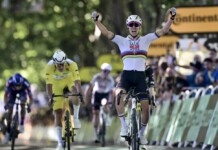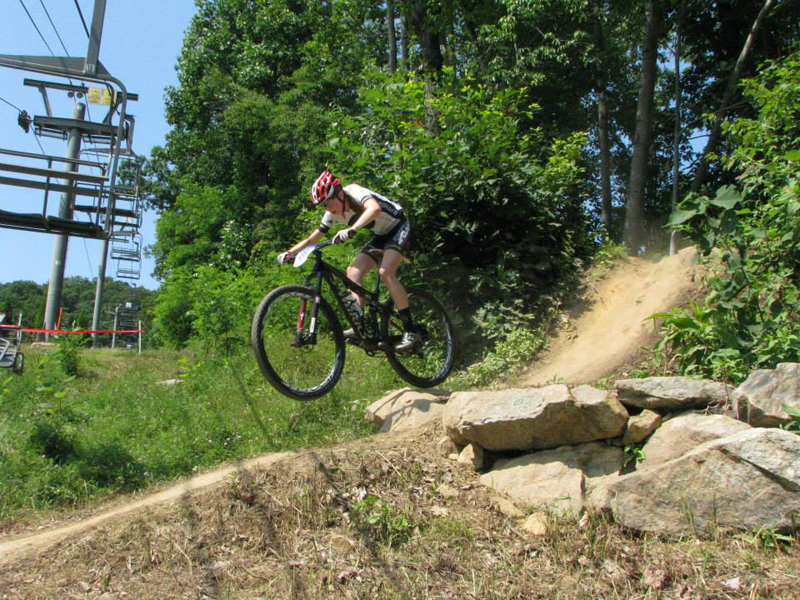By Enrique Arce-Larreta — This summer I was accepted to the International High School Teacher Program at CERN in Geneva, Switzerland. I studied particle physics with 50 teachers from 36 different countries for three weeks. As an avid cyclist, I could hardly resist flying my bike over and taking advantage of the many climbs near Geneva. I contacted several people to help me plan my bicycle trips in the Swiss and French Alps.
First, I contacted Mark Smedley, who owns Pika Packworks (pikapackworks.com), a local Utah-based bicycle carrying case company. Mark gave me a personal tour of his business. He lives in a custom built home that he built himself in Poplar Grove (just west of downtown Salt Lake City) and makes the cases in his basement. I purchased an excellent case that got my bike safe and sound both ways. The case is nice because you just remove your wheels, seat, pedals, derailleur, and stem. It takes about 15 minutes to pack up.
The second person to help me was Will from cyclingchallenge.com, an excellently organized website and blog for road bike routes in the Alps. Will replied to my emails and recommended various routes accessible from Geneva and in Switzerland. In the weeks before my trip to see the Tour de France, I rode the Col de Faucille in the Jura mountains, the Col de Barillette, Grimsel Pass, Furka Pass and Susten Pass. All of these were great rides, and it was an amazing Swiss trip.
During my last weekend in Geneva, the penultimate stage (stage 20) of the Tour de France was held on July 23, 2016 just 37 miles from the dorm room I stayed in. It was the final mountain stage of the Tour, and the last chance for the competitors to make a move in the general classification. I made plans to attend this stage, rain or shine. One surprise about the Alps is the number of rainy days in July, there are an average of 13 rainy days in Andermatt, Switzerland, for example. So I had to prepare for rain. I was constantly checking the weather as the weekend drew near, and thunderstorms were on the horizon.
I started my ride from CERN, in the northwest part of Geneva, and rode southeast through the city and its suburbs. For the first hour or so the narrow European roads had lots of traffic. The drivers are used to many bicycle commuters and knew how to drive with us – no honking. My handling skills were tested with no shoulders on the roads.
My first signs of the tour were in a small town named Mieussy which was on the route of the stage that day. The town had one main street and you could bike from one end to the other in about 3 minutes. The town had been decked out in colors and bicycles lined the street. At the center, a stage was set up and accordion players were entertaining all the locals. I started seeing other cyclists on the road, and was easily able to speak in English to all of them-something that I found easy to do all the time in Switzerland. The first group I joined were 4 cyclists living in Geneva but from the UK. We were all headed to the final climb of the day, the Col de Joux Plane. Passing this group, I soon was talking to three German cyclists who were supporting the Etixx Quick-Step team, because they were friends with pro cyclists riding in the tour. Just two and a half hours after leaving CERN, I was arriving at the base of the climb. The weather had been overcast, and not hot. A perfect day.
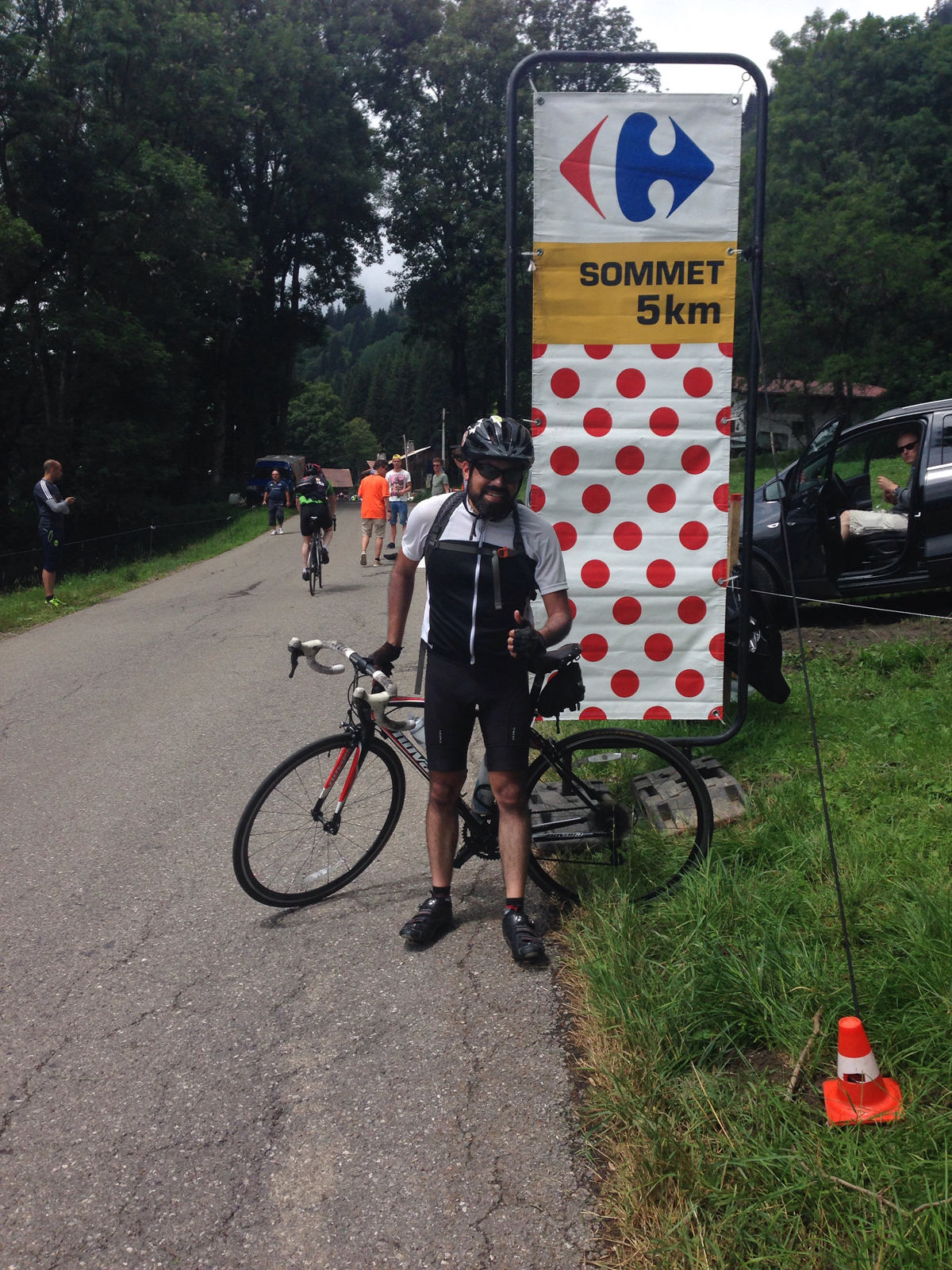
The ride had been flat the whole day and as I arrived in the town of Samoens, I saw the sign for Col de Joux Plane, take a left. As soon I took that left, it was at least a 10 percent grade on the bike. The ride was fairly relentless and steep the rest of the way. It was hard for me to gauge the overall difficulty because I would stop to take photos often, keeping me out of any good climbing rhythm. There were plenty of spectators despite ominous clouds. The crowd was a mix of cyclists and local families out on picnics. I saw some scattered farm homes on the route, and those folks were grilling sausage, cooking cheese fondue, and drinking wine. I was offered wine and beer by a few cheering fans and high fived by several packs of children. It was easy to get people to cheer me on. There were many switchbacks which seemed to draw the bulk of the spectators. Security seemed sparse, even though the terrorist attacks in Nice had occurred just that week.
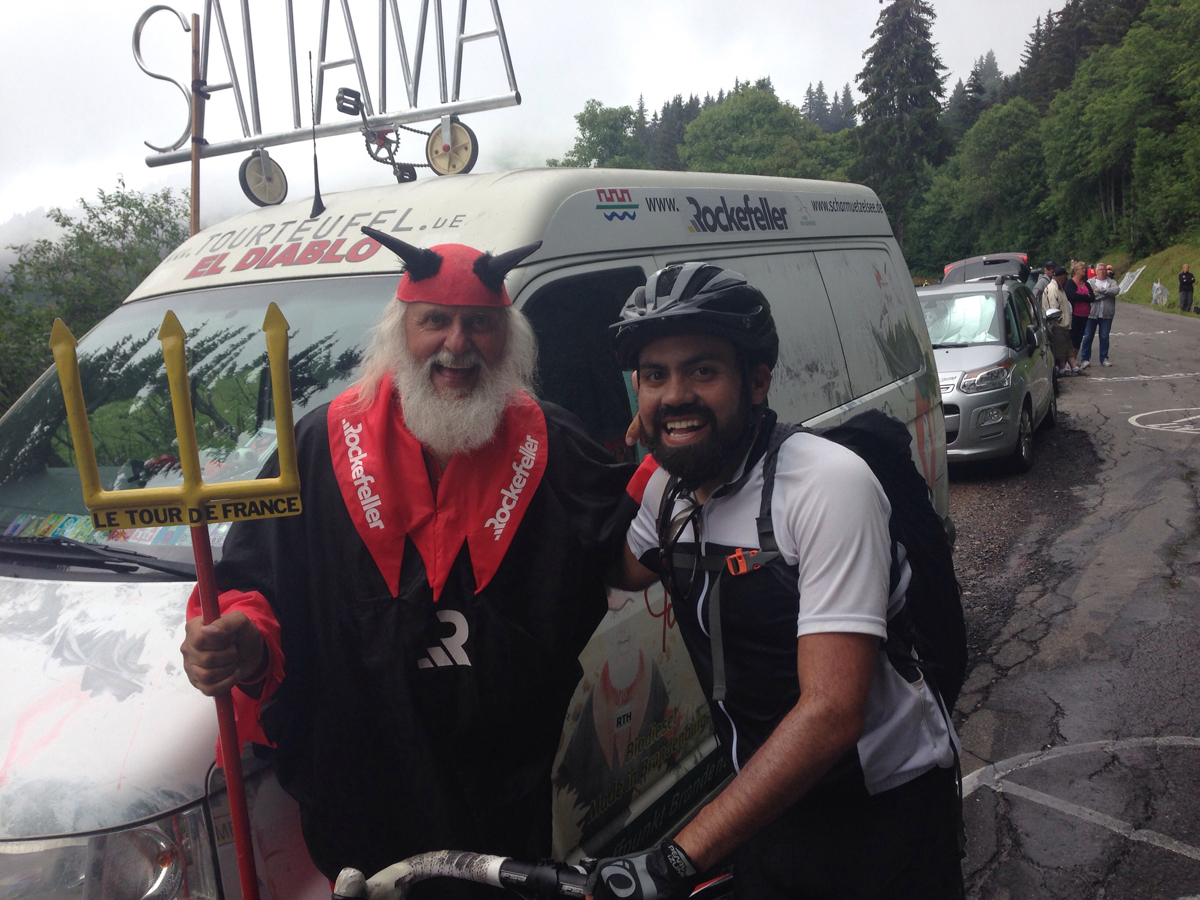
Near the top of the climb, as the grades became steeper, I rolled into a dense, wet fog and alpine conditions. I saw a famous spectator who dresses up as the devil and chases cyclists with a pitchfork–“El Diablo” was there waiting for the riders. I met him briefly, and he didn’t speak English or Spanish, so I couldn’t really ask him anything. When I reached the summit of the Joux Plane, I thought about descending to the finish, but security was in the process of closing the road to cyclists. I rode back down to a steep part of the climb, about 5 km from the summit, and bought some beer and an official Tour de France souvenir bag with water bottle, t-shirt and some other fun stuff. No sooner had I done this, than the caravan started driving through.
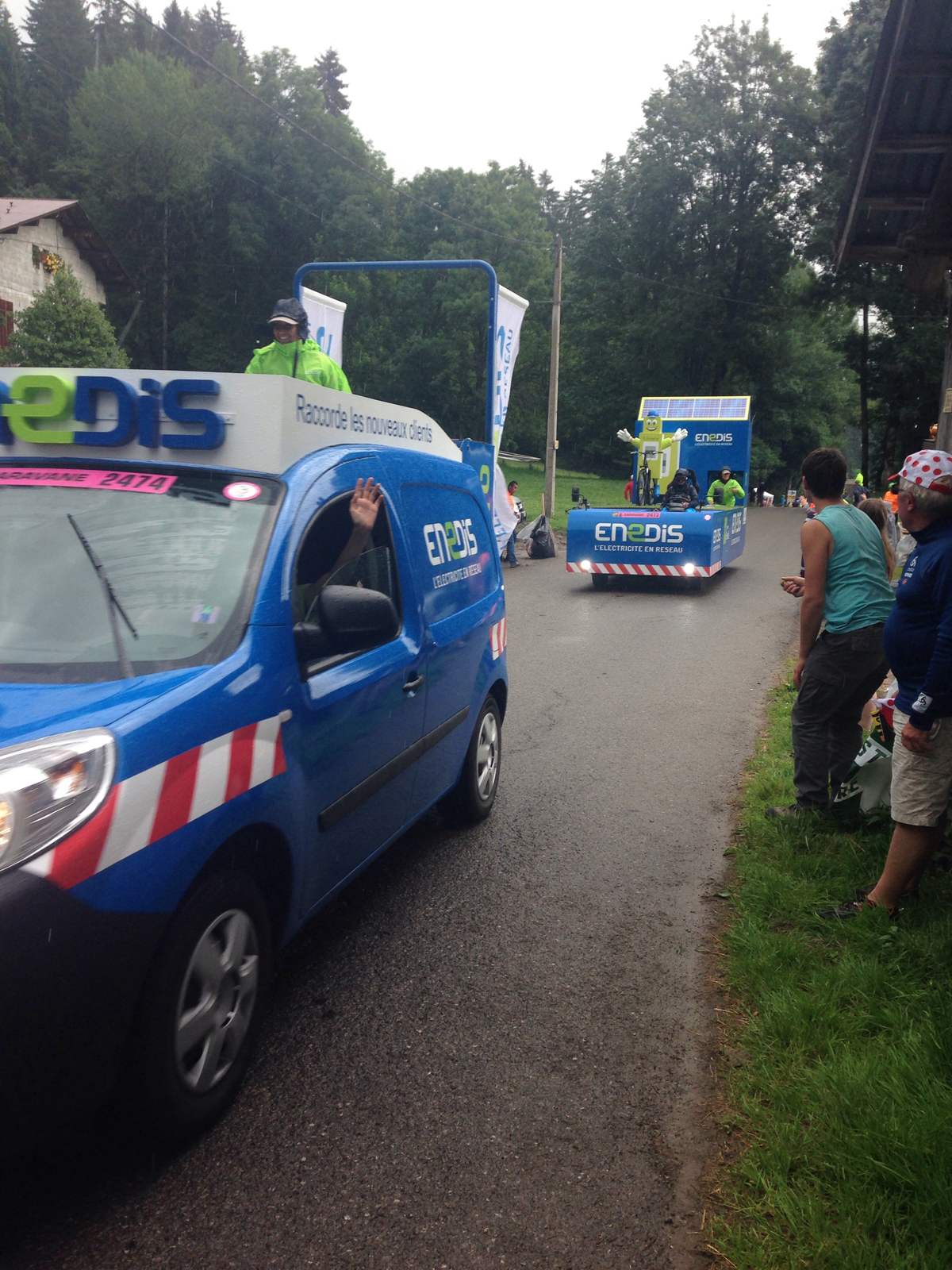
The caravan is a group of sponsors in cars that drive through the course, throwing free goodies at everyone. They are usually equipped with interesting decorations like parade floats. Some have girls tethered to the vehicles so they don’t fall out as they project goodies to spectators. Banette, a bakery company was throwing out Twinkie-like pastries. Two of those became my lunch. I also ate some jelly beans that were sponsoring the tour. I collected several polka-dot hats and bunch of other random stuff: stickers, flags, bandanas, most of which I passed on to the nearest family and their children.
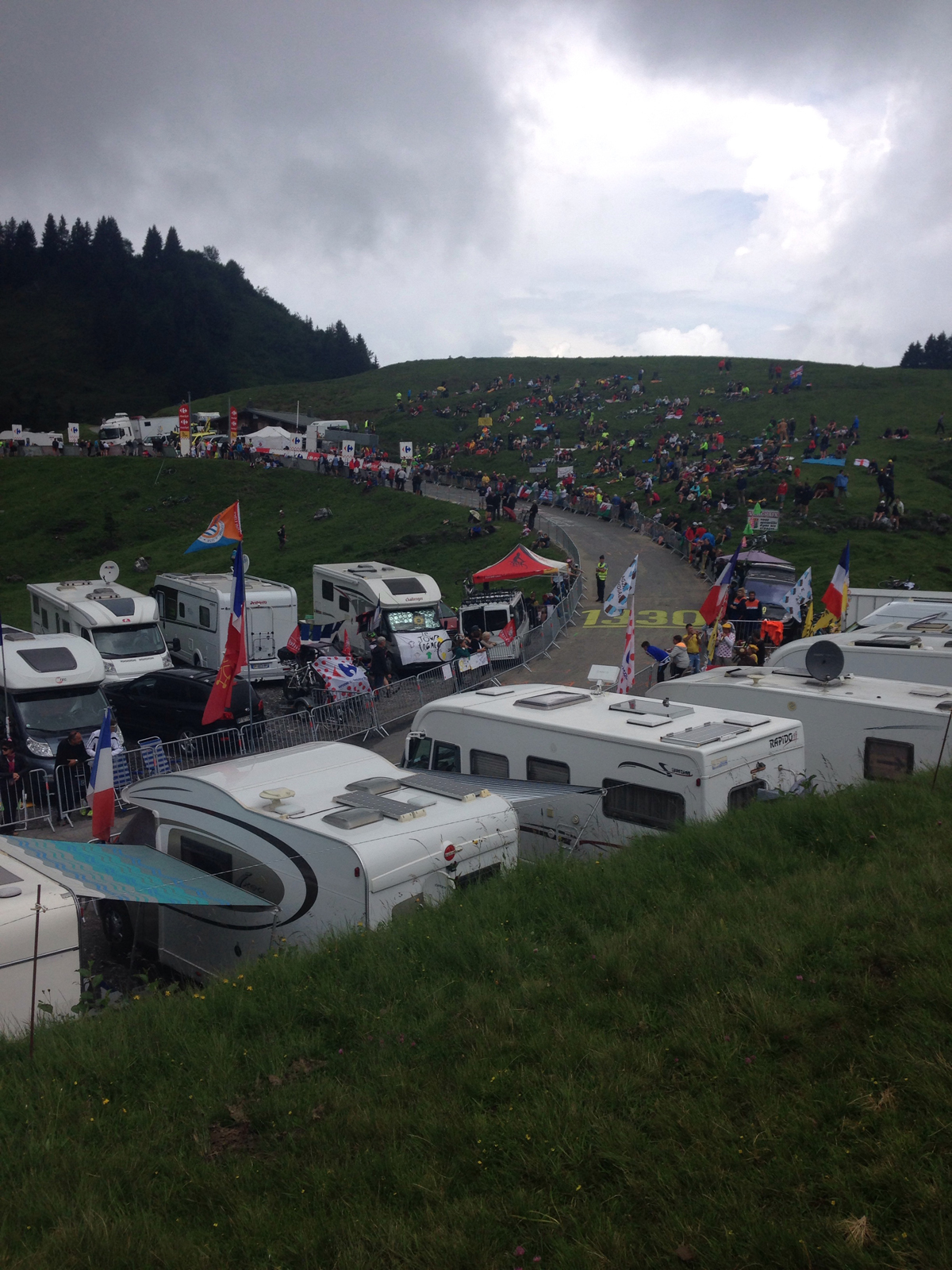
At some point during the caravan, it started raining pretty intensely. I layered up and put on my rain jacket. I was lucky to be standing by a barn, which shielded me and my bike from most of the rain. Soon, I had many new friends who were also avoiding the rain. I met a couple who had driven from Poland to watch the tour. The man was an avid cyclist and had maps of the route and timetables. His girlfriend was not a big fan of cycling and told me her top recreational activity was pole dancing, which she had recently taken up. They both spoke English well, and it was nice to converse. The rain continued for an hour as we waited for the riders to show up.
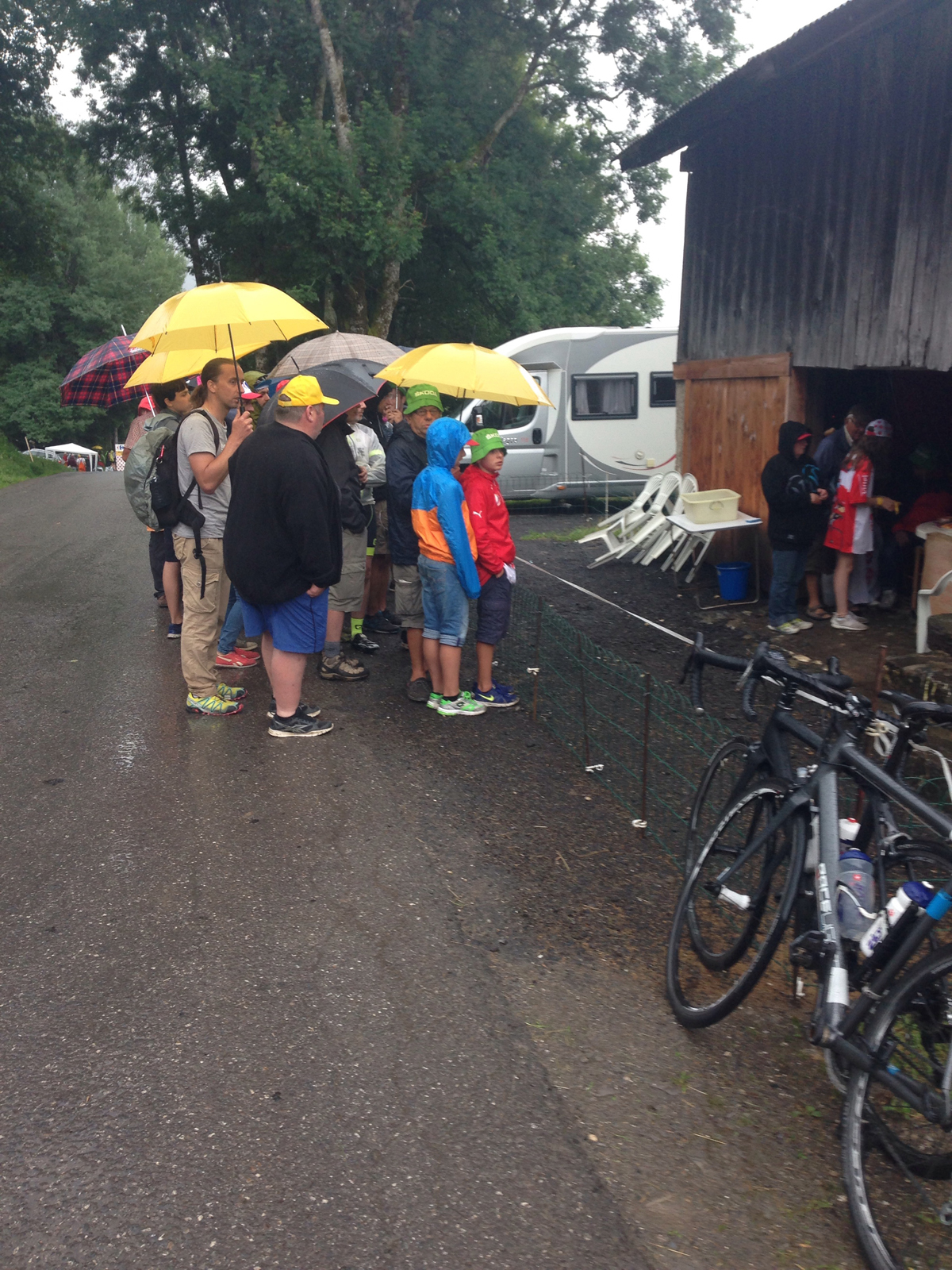
A family who lived on the farm had set up a television with the German broadcast of the stage so we could watch. So a group of us armed with umbrellas watched as the riders approached and began to climb the Col de Joux Plane. There was a break away group around four minutes ahead of the yellow jersey group. I left the TV and found a steep pitch along the road and waited. The motorbikes came through, followed by official cars, and a helicopter hovering above. Soon the first members of the break away group approached and I chased after them, encouraging them up the climb. The remnants of the break came through and I was chanting “5 km to Paris!” and “I named my dog Katusha” which made some riders laugh (Katusha is the name of a team in the Tour but I think its a good dog name). Soon, the yellow jersey group came by, moving super fast up the climb. I saw Chris Froome, followed by Valverde, Quintana and all the other GC boys. I screamed at Nairo: “Campion” and that I was from Utah.
Peter Sagan bicycled by all by himself, and I recognized him as I was chasing him. He had his own security car and was wearing the green sprinters jersey. Simon Geschke, one of the only bearded cyclists, came by alone, and chanted at him to “remember my beard.” The main peloton came last, with all the remaining riders in one large group. Past them were the team cars and the broom wagon – the last car that sweeps up all the remaining riders who can’t finish the race. After this, I began the descent back to Samoens. It was slow going because of all the cars and people walking down. The rain stopped once I got back into the small town, and it didn’t rain on the ride back to CERN. Riding back seemed to be faster, and before I knew it, I was back to my dorm room, ready to freshen up and drink more beer.


